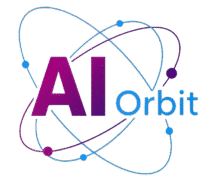GOLDMAN SACHS ANNOUNCES FIRMWIDE LAUNCH OF AI ASSISTANT
The financial landscape is undergoing a profound transformation, with artificial intelligence leading the charge. In a significant stride forward, Goldman Sachs, a titan in the global financial services industry, has officially announced the firmwide rollout of its proprietary generative artificial intelligence assistant, aptly named the GS AI Assistant. This strategic deployment marks a pivotal moment in the institution’s long-standing commitment to leveraging advanced technology, promising to redefine productivity and operational efficiency across its diverse departments.
The introduction of the GS AI Assistant is not merely an incremental upgrade but a foundational shift in how employees at Goldman Sachs will interact with data, generate insights, and execute tasks. Designed as a natural language interface, this innovative tool is poised to empower a wide array of professionals, from seasoned investment bankers to meticulous research analysts and diligent wealth managers, with specialized AI capabilities tailored to their unique roles. The overarching goal, as articulated by the firm’s leadership, is to significantly enhance workflow, accelerate decision-making, and ultimately deliver superior value to clients.
The implications of such a comprehensive AI integration within one of the world’s leading investment banks extend far beyond internal operational benefits. It signals a robust trend within the financial sector towards embracing cutting-edge AI to maintain a competitive edge, navigate complex markets, and optimize every facet of their business. As the GS AI Assistant becomes an integral part of daily operations, its impact is expected to resonate throughout the industry, setting new benchmarks for technological adoption and innovative service delivery.
WHAT IS THE GS AI ASSISTANT?
At its core, the GS AI Assistant is an advanced in-house artificial intelligence application, meticulously developed to support and augment the human workforce at Goldman Sachs. It operates as a natural language assistant, meaning employees can interact with it using conversational language, making complex tasks more intuitive and accessible. What sets this tool apart is its sophisticated architecture, which allows it to securely access and utilize an array of large language models (LLMs) that have been rigorously vetted and approved by the company.
The versatility of the GS AI Assistant stems from its ability to integrate with and draw power from multiple leading LLMs. This multi-model approach ensures that users have the flexibility to select the most appropriate AI engine for a given task, optimizing performance and accuracy. Among the formidable models the assistant can tap into are OpenAI’s GPT-4o, GPT-4o-mini, and o3-mini; Google’s Gemini 2.0 Flash, Gemini 2.0 Flash Vision, Gemini 1.5 Flash, and Gemini 1.5 Pro; and Claude 3.7 Sonnet, alongside various open-source models. This diverse technological foundation enables the GS AI Assistant to perform a wide range of functions, including:
- Summarizing Complex Documents: Rapidly distill lengthy reports, financial statements, and market analyses into concise, actionable summaries.
- Drafting Initial Content: Generate preliminary versions of emails, reports, presentations, and other written materials, significantly reducing drafting time.
- Performing Data Analysis: Process and interpret vast datasets, identifying trends, anomalies, and insights that might otherwise take hours or days for human analysts.
- Language Translation: Offer real-time or near real-time translation of research documents, client communications, and other materials into multiple languages, enhancing global collaboration and client service.
The firm’s CIO, Marco Argenti, emphasized the transformative potential of this tool in an internal memo, noting that thousands of employees were already leveraging its capabilities prior to the firmwide launch. He encouraged all staff to explore how the GS AI Assistant can positively impact their daily tasks and significantly boost overall productivity.
A DECADE OF INNOVATION: GOLDMAN SACHS’ AI JOURNEY
The current firmwide rollout of the GS AI Assistant is not a sudden pivot but the culmination of more than a decade of strategic investment and development in artificial intelligence at Goldman Sachs. The institution recognized the transformative power of AI early on, systematically integrating advanced analytics and machine learning into various aspects of its operations over the years. This long-term commitment has built a solid foundation of expertise, infrastructure, and a data-driven culture essential for the successful deployment of sophisticated generative AI tools.
Prior to this broader launch, Goldman Sachs had already taken significant steps in integrating AI into its technological backbone. Last year, the firm introduced a version of the GS AI Assistant specifically tailored for its vast pool of developers and engineers. This initial rollout to thousands of technical professionals aimed to accelerate the creation of new generative AI applications internally, fostering an environment of rapid innovation and efficiency within their engineering teams.
This phased approach allowed Goldman Sachs to test, refine, and scale its AI capabilities in a controlled environment, addressing technical complexities and user adoption challenges before expanding the technology across the entire enterprise. The insights gained from the developer rollout were crucial in fine-tuning the GS AI Assistant for broader application and ensuring its seamless integration into diverse workflows.
POWERING PRODUCTIVITY ACROSS DEPARTMENTS
The true power of the GS AI Assistant lies in its adaptability and specialized functionality, designed to cater to the unique needs of different departments within Goldman Sachs. By offering tailored features, the AI copilot becomes an indispensable tool, augmenting human intelligence and efficiency across the board.
INVESTMENT BANKING
In investment banking, where time is of the essence and information overload is constant, the GS AI Assistant can dramatically streamline processes. Bankers can use it to:
- Rapidly analyze vast amounts of company data, market trends, and regulatory documents for due diligence.
- Quickly summarize lengthy pitch books and client proposals, enabling bankers to focus on strategic insights.
- Generate initial drafts of deal terms, financial models, and valuation reports, significantly cutting down on preparation time.
WEALTH MANAGEMENT
For wealth managers, the AI assistant offers a powerful way to enhance client service and portfolio management:
- Summarize complex investment research and market commentaries for clients in an easily digestible format.
- Draft personalized client communications, freeing up wealth managers to focus on building deeper relationships.
- Provide quick insights into portfolio performance, risk assessments, and investment opportunities tailored to individual client profiles.
RESEARCH AND ANALYSIS
Research analysts, who deal with immense volumes of data and information daily, can leverage the tool to:
- Expedite the review of financial reports, economic indicators, and industry news.
- Generate initial drafts of research reports and market analyses, allowing analysts to concentrate on critical thinking and deeper insights.
- Identify hidden patterns and correlations within data that might be overlooked by manual methods.
DEVELOPERS AND ENGINEERS
As the initial beneficiaries, developers continue to reap rewards from the specialized AI assistant:
- Automating repetitive coding tasks and generating boilerplate code.
- Identifying and suggesting fixes for bugs more efficiently.
- Assisting with code documentation and understanding legacy systems.
By providing these specialized functionalities, the GS AI Assistant is designed not to replace human expertise but to amplify it, allowing employees to dedicate more time to complex problem-solving, strategic thinking, and client engagement.
IMPACT AND IMPLICATIONS FOR THE FINANCIAL INDUSTRY
Goldman Sachs’ firmwide AI rollout is more than an internal technological upgrade; it sets a precedent for the entire financial services industry. The implications are far-reaching and signal a new era of digital transformation.
EFFICIENCY GAINS
The most immediate and tangible benefit is the promise of unprecedented efficiency. By automating repetitive, data-intensive, and time-consuming tasks, the GS AI Assistant enables employees to process more information, respond faster, and complete projects with greater agility. This translates into significant cost savings and improved operational throughput, ultimately enhancing profitability.
ENHANCED DECISION-MAKING
AI’s ability to analyze vast datasets and identify subtle patterns empowers better, more informed decision-making. By providing rapid summaries and insights, the AI assistant can help financial professionals quickly grasp complex situations, assess risks, and identify opportunities with greater confidence. This is crucial in fast-moving markets where timely decisions can yield substantial advantages.
COMPETITIVE EDGE
In a highly competitive industry, early and effective AI adoption provides a distinct advantage. Firms that can leverage AI to reduce operational costs, accelerate deal-making, personalize client services, and improve risk management will inevitably outperform those that lag in technological integration. Goldman Sachs’ move solidifies its position at the forefront of financial innovation.
ETHICAL CONSIDERATIONS AND JOB EVOLUTION
While the benefits are clear, the widespread adoption of AI also brings important considerations. Financial institutions must address issues such as data privacy, algorithmic bias, and the ethical use of AI in sensitive financial contexts. Furthermore, the nature of jobs within finance will evolve, shifting from routine tasks to roles that require more strategic oversight, critical thinking, and human-centric skills. This necessitates ongoing training and upskilling for the workforce.
LEADERSHIP’S VISION FOR AI INTEGRATION
The strategic impetus behind Goldman Sachs’ aggressive AI integration is clearly articulated by its leadership. Marco Argenti, the firm’s CIO, framed the firmwide launch of the GS AI Assistant as a “critical moment” in their AI journey, underscoring the scale and ambition of this initiative. His vision is for the tool to become an essential component of every employee’s daily routine, fostering a culture of innovation and continuous productivity enhancement.
Echoing this sentiment, Goldman Sachs CEO David Solomon provided further insight into the firm’s broader AI strategy during an earlier earnings call. He emphasized that the firm is “leveraging AI solutions to scale and transform our engineering capabilities as well as to simplify and modernize our technology stack.” This statement highlights that AI is not just a tool for front-office efficiency but a core component of their foundational technological evolution.
Solomon also extended his view beyond the confines of Goldman Sachs, forecasting a significant economic impact from widespread AI adoption. He stated, “We continue to believe an acceleration in AI adoption will allow for further efficiencies for our own business, and for companies large and small. As it is utilized more broadly, productivity gains for the economy will be significant.” This outlook positions Goldman Sachs not only as an adopter of AI but also as a proponent of its transformative potential for the broader economy, recognizing the trickle-down effect of enterprise-level efficiencies.
The leadership’s unified vision underscores that AI at Goldman Sachs is not a short-term trend but a fundamental pillar of their long-term growth strategy, aimed at optimizing internal operations and capitalizing on the wider economic shifts driven by AI.
THE ROAD AHEAD: CONTINUOUS EVOLUTION OF AI IN FINANCE
The firmwide launch of the GS AI Assistant is a significant milestone, but it represents only one chapter in Goldman Sachs’ ongoing AI narrative. The rapid pace of innovation in artificial intelligence, particularly in the realm of generative AI and large language models, means that continuous development and adaptation will be key.
As the GS AI Assistant becomes more deeply embedded in daily workflows, the firm will likely iterate on its capabilities, incorporating user feedback and integrating even more advanced AI techniques. Future enhancements could include deeper predictive analytics, more sophisticated natural language understanding for highly nuanced financial jargon, and perhaps even proactive task initiation based on learned user behaviors or market events.
Beyond internal applications, the insights and expertise gained from developing and deploying the GS AI Assistant could also influence Goldman Sachs’ client-facing products and services. As AI democratizes access to complex financial analysis, the firm may explore new ways to deliver value, whether through AI-powered investment advisory tools or more personalized financial planning resources for its diverse client base.
The journey of AI in finance is one of continuous evolution. Goldman Sachs’ commitment to building and deploying such a comprehensive tool demonstrates a forward-thinking approach that recognizes AI not as a fleeting technology but as a permanent, transformative force shaping the future of global finance.

